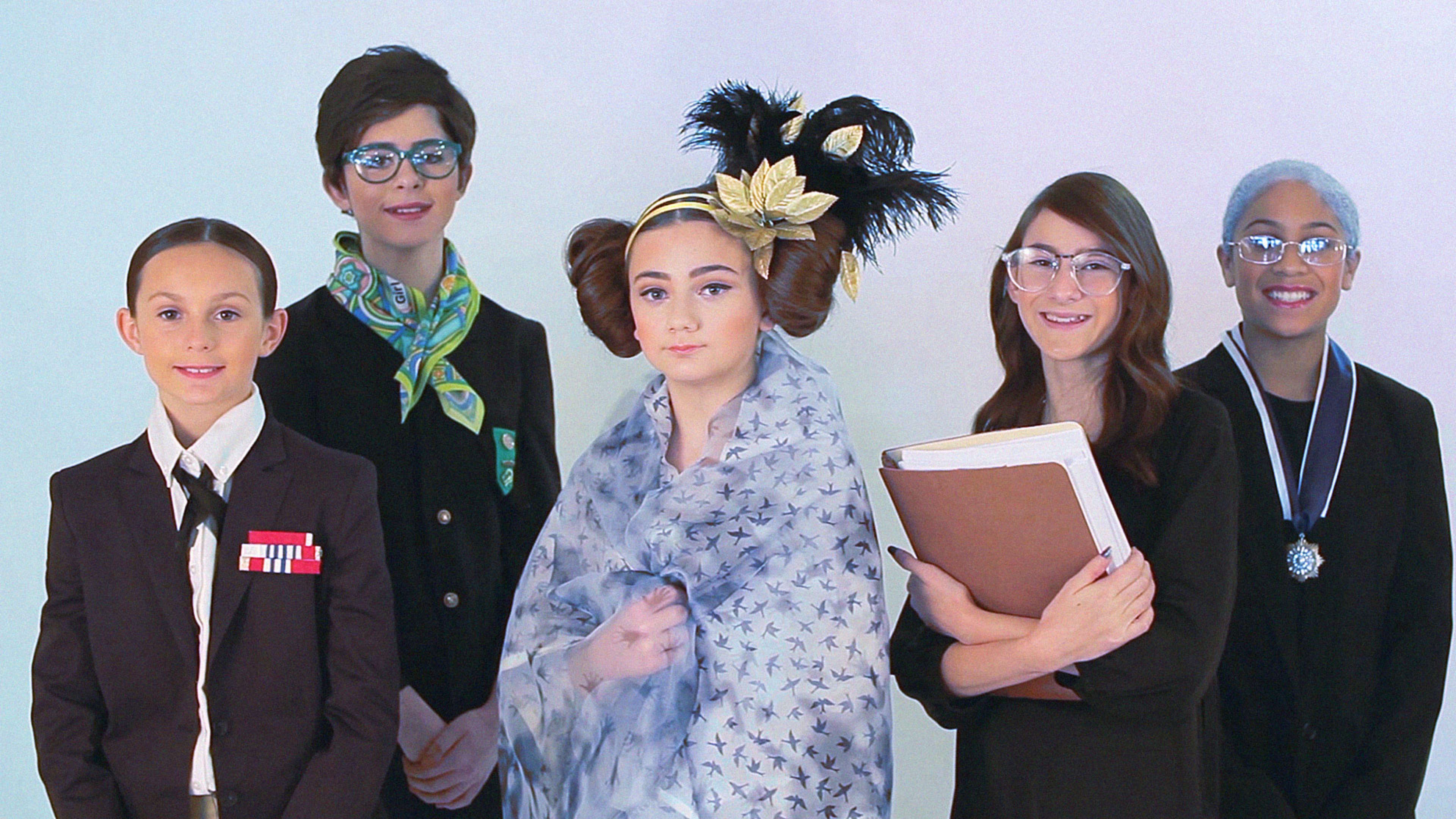The gender gap in the fields of science, technology, engineering, and mathematics is a known and stubborn quandary: While women make up roughly half of the college-educated U.S. workforce, they account for less than 30% of STEM jobs.
To fix that, the Girl Scouts hopes to prepare at least 2.5 million girls for potential STEM-related jobs by 2025. That mission includes a new awareness campaign, followed by the expansion of an elementary-school effort called “Think Like a Programmer” to keep girls interested in science and tech as they move on to middle school and high school.
The awareness component has a simple message: Women may be underrepresented in science and tech, but they’ve already made huge impacts. To highlight that, the Girl Scouts created a video in which five of its current members transform into five current and historical STEM icons. They began sharing photos of the transformation in honor of Computer Science Education Week in early December.
The girls dressed up, respectively, as Ada Lovelace, who wrote code for the Analytical Engine, a computer prototype developed in the mid-1800s; Grace Hopper, a modern programming pioneer and Navy admiral; Katherine Johnson, the NASA mathematician who helped save Apollo 13; and Margaret Hamilton from MIT’s software engineering lab, who wrote flight programs for NASA.
To tie it all together, the final girl dressed as Sylvia Acevedo, a former Girl Scout turned engineer turned rocket scientist at NASA’s Jet Propulsion Laboratory–who just so happens to be the Girls Scouts’ current CEO. “Casting a spotlight on powerful role models within the STEM arena offers girls a vision of what is possible, and can steer her career trajectory at any age,” Acevedo says in an email to Fast Company. “After all, you have to see it to be it.”
But the organization has realized that it needs new ways to let that inspiration evolve. That’s where the “Think Like a Programmer” expansion comes in. In Girl Scouts terms, the program is considered a “journey”–a longer-term project that builds interest in some discipline (but doesn’t earn the girls badges). For young kids, the goal has been to figure out some ways to use mathematics to both solve a problem and create something remarkable.
Among second and third graders–technically, they’re Brownies, not full-fledged Girls Scouts–one project involved using beads and string to make sun catchers. “It’s a fun and age-appropriate activity where girls learn how this process is like creating an algorithm with patterns, variables, and functions (pieces of code that you want to use over and over again),” notes a spokesperson in an email.
The curriculum for older kids is still being finalized, but would likely be more computer-based, like writing code that automatically solves complex problems (a model that organizations like Girls Who Code have already proved to be wildly successful). For instance, they might participate in “an activity in which girls create an algorithm to solve a simple problem, like choosing a vacation spot,” the spokesperson says.
That’s not exactly a community-changing concept–and a bit disconnected from the group’s supposed emphasis on world-improving icons–but it’s a start. The group will pilot the idea among 60 troops around the country in early 2018, with a wider launch next fall.
While the group hasn’t shared the price tag for this sort of effort, defense and cybersecurity company Raytheon has agreed to pick up the tab. As the group points out in a related promotional video, 1.8 million girls currently participate in the Girl Scouts. The cybersecurity world just so happens to be facing a projected skills gap of 1.8 million qualified workers within the next five years.
And there’s obvious interest among the Girl Scouts’ younger members: About 74% of the group’s younger members report being interested in the STEM field, although that enthusiasm often falls away as they get older.
Recognize your brand’s excellence by applying to this year’s Brands That Matter Awards before the early-rate deadline, May 3.
